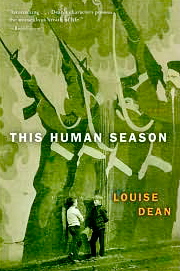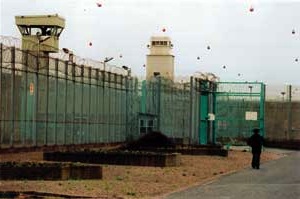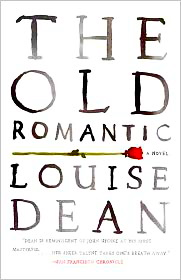“Hundreds of years of bloodshed and still the same tune. Republicans, ready to rise, ready to die, to give their lives, hunger strikes, hangings, the names of their forefathers: Robert Emmett, Donovan Rossa, Tom Clarke, MacSwiney, Pearse.”
 From the time of Irish “independence,” recognized by treaty between Ireland and Britain in 1922, to the Good Friday Accords of 1998, the island has suffered from sectarian violence. Even in recent years, after the “Peace” agreement, many Republicans, nearly all of them Catholic and including the IRA and Sinn Fein, continue to want a united Ireland and the return of the six northern counties which have been ruled by Britain for eight-five years. Ardent Loyalists, mostly Protestants who support British rule and the Royal Ulster Constabulary, want to protect their minority interests by remaining in control in their limited area of the island. Set in Belfast in November and December of 1979, this novel by Louise Dean focuses on the violence which reached its irrational peak at that time, and she holds back nothing in describing the brutality and tit-for-tat horrors in which both sides engaged.
From the time of Irish “independence,” recognized by treaty between Ireland and Britain in 1922, to the Good Friday Accords of 1998, the island has suffered from sectarian violence. Even in recent years, after the “Peace” agreement, many Republicans, nearly all of them Catholic and including the IRA and Sinn Fein, continue to want a united Ireland and the return of the six northern counties which have been ruled by Britain for eight-five years. Ardent Loyalists, mostly Protestants who support British rule and the Royal Ulster Constabulary, want to protect their minority interests by remaining in control in their limited area of the island. Set in Belfast in November and December of 1979, this novel by Louise Dean focuses on the violence which reached its irrational peak at that time, and she holds back nothing in describing the brutality and tit-for-tat horrors in which both sides engaged.
The novel opens inside The Maze, the famed prison in Long Kesh, where for three years a major protest has been going on. Sadistic guards have turned the miseries of prison life into horrific, inhuman conditions. The prisoners themselves have added to their own misery in order to increase the misery for the guards, however. They refuse to wear prison uniforms, wearing no clothes at all and wrapping themselves in their blankets—leading to the expression “on the blanket” for men engaged in the protest. They refuse to use latrines of any kind, filling their cells and halls with excrement and creating a stench so intense that it remains on the bodies of the guards even after they have showered.
Dean describes it all in detail, an almost clinical recitation of scenes so stomach-churning that many readers will prefer not to read them. The prisoners have five demands, none of them outrageous. None of them have been granted—not the right to wear their own clothes, not the right to be considered political prisoners and not criminals, and not to have the right to one visit, one parcel, or one letter per week. Desperate for attention to their demands, they are about to engage in a hunger strike, the pivotal event for the action here.
This Human Season puts a human face on the turmoil in Belfast by focusing on two families—the Morans, whose teenage son Sean has been arrested and sentenced to sixteen years at Long Kesh, and John Dunn, a 39-year-old former British soldier who has just started work as a guard at Long Kesh. He has recently connected with the British son he never knew, born out of wedlock, a young man about the same age as Sean Moran, who is now “on the blanket” and plans to join the hunger strike. Mark, Dunn’s son, is about to visit John Dunn and his girlfriend Angie for the first time. Dean uses parallel scenes (most touchingly, at Christmas) to show how much, on the human level, these two families have in common. All the parents worry about their sons and want to protect them, the sons try to make decisions but recognize that they have much to learn, and all must respect each other and the decisions they eventually make.
 Dean’s focus is primarily on illustrating the conditions and the thinking of the time as the minimal plot unfolds. Kathleen Moran, Sean’s mother, becomes involved with the Relatives Action Committee and attends secret meetings. His thirteen-year-old brother is arrested for throwing a petrol bomb. Their local priest is at odds with some other priests because he supports the hunger strike and the protest within the prison. Brendan Coogan, who lives outside the prison, represents Sinn Fein inside the prison and in the community. Prisoner O’Malley, maintains IRA control within the prison, and uses his visitors to direct retaliatory murders on guards outside the prison walls. The activities of the guards sometimes make Dunn, a more sensitive man than most, reluctant to participate and to regret his job. Killings of prison officers in their own homes or neighborhoods add tension to the parallel stories of the two families.
Dean’s focus is primarily on illustrating the conditions and the thinking of the time as the minimal plot unfolds. Kathleen Moran, Sean’s mother, becomes involved with the Relatives Action Committee and attends secret meetings. His thirteen-year-old brother is arrested for throwing a petrol bomb. Their local priest is at odds with some other priests because he supports the hunger strike and the protest within the prison. Brendan Coogan, who lives outside the prison, represents Sinn Fein inside the prison and in the community. Prisoner O’Malley, maintains IRA control within the prison, and uses his visitors to direct retaliatory murders on guards outside the prison walls. The activities of the guards sometimes make Dunn, a more sensitive man than most, reluctant to participate and to regret his job. Killings of prison officers in their own homes or neighborhoods add tension to the parallel stories of the two families.
 Historical events in Belfast are primary—becoming more than just a framework for the novel. Though the reader develops a sense of horror at what is happening on both sides, there is little sense of identification with particular characters, despite the episodes which tell about the life of Kathleen Moran and the home life of John Dunn. The hard-case attitudes of the prisoners allow little room for exploration of their characters, and the many guards, while having individual quirks, are not very different from each other. The character who comes closest to capturing the reader’s interest is Dunn, but Dean develops such obvious forboding about his fate and that of other guards from the outset of the novel that the reader avoids becoming involved because of the direction in which Dean seems to be taking the conclusion. The novel reveals the depth of the turmoil in Belfast in 1979, along with the people and factions involved in the troubles, and that seems to have been Dean’s point. The characters are vehicles through whom this information is conveyed, rather than a focus of the novel for their own sakes, but it’s powerful information—and it will keep readers who are interested in Irish history glued to their seats.
Historical events in Belfast are primary—becoming more than just a framework for the novel. Though the reader develops a sense of horror at what is happening on both sides, there is little sense of identification with particular characters, despite the episodes which tell about the life of Kathleen Moran and the home life of John Dunn. The hard-case attitudes of the prisoners allow little room for exploration of their characters, and the many guards, while having individual quirks, are not very different from each other. The character who comes closest to capturing the reader’s interest is Dunn, but Dean develops such obvious forboding about his fate and that of other guards from the outset of the novel that the reader avoids becoming involved because of the direction in which Dean seems to be taking the conclusion. The novel reveals the depth of the turmoil in Belfast in 1979, along with the people and factions involved in the troubles, and that seems to have been Dean’s point. The characters are vehicles through whom this information is conveyed, rather than a focus of the novel for their own sakes, but it’s powerful information—and it will keep readers who are interested in Irish history glued to their seats.
Photos, in order: The author’s photo by Marcus Dignum appears on http://www.houghtonmifflinbooks.com
Long Kesh, with guard outside, appears on http://www.anphoblacht.com
On October 15 – 16, 1974, the prisoners of Cage 13, set fire to the prison. http://news.bbc.co.uk The prison remained open until 2000.
open until 2000.
Note: This novel (written in 2007) is totally different in style and theme from the darkly humorous family study of Louise Dean’s new novel, THE OLD ROMANTIC (2011–and reviewed here) and shows the incredible versatility of this young author, who has received rave reviews on both sides of the Atlantic for her four novels.
